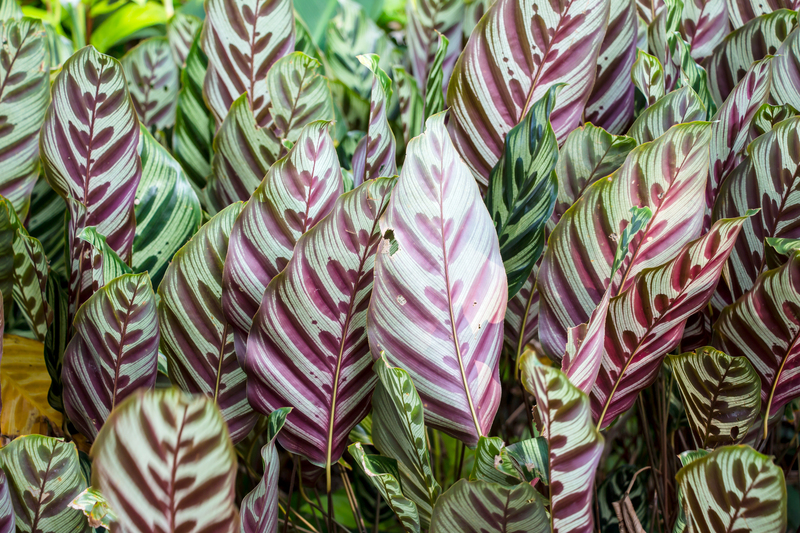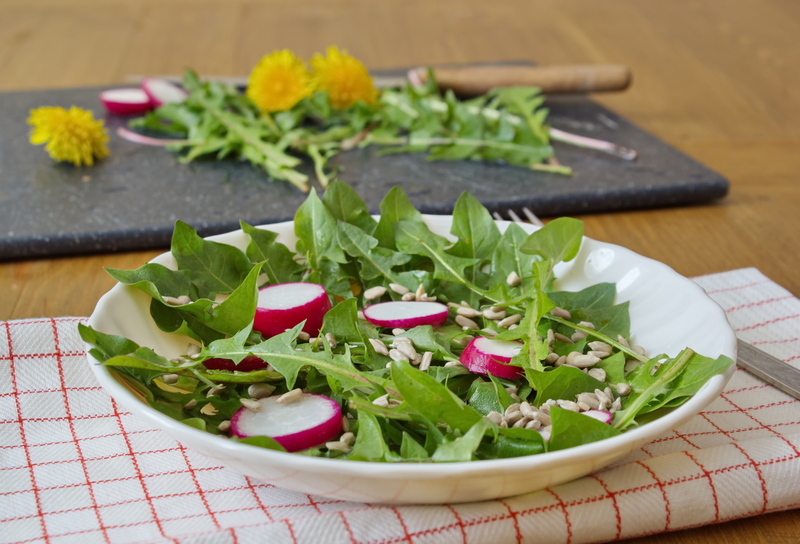Lush Gardens and Happy Dogs: Creating Synergy
Posted on 31/08/2025
Lush Gardens and Happy Dogs: Creating Synergy
Imagine a vibrant garden bursting with color, fragrance, and life--one that's also a paradise for your canine companion. Turning this vision into reality is entirely possible when you approach garden design and pet care with a harmonious mindset. This guide will explore how to create a synergy between lush gardens and happy dogs, ensuring aesthetics, safety, and joy for both you and your four-legged friend.
Why Integrate Dog-Friendly Elements in Your Lush Garden?
- Encourages physical activity for pets in a safe environment.
- Enhances mental stimulation and reduces boredom-related behaviors.
- Improves the beauty and functionality of your garden space.
- Fosters a stronger bond between you and your dog.
Lush gardens aren't just for admiring; they can be spaces where pets thrive. By considering your dog's needs alongside your landscaping goals, you'll maximize enjoyment for every member of the family.

Understanding Your Dog's Needs in the Garden
Before digging, planting, or designing, it's essential to observe your dog's habits:
- Does your dog enjoy digging?
- Is he/she an enthusiastic runner?
- Does your pet chew on plants or garden decor?
- Where does your pet prefer to relax?
Knowing your dog's behaviors will guide strategic decisions for a harmonious green space.
Choosing the Right Dog-Friendly Plants for a Lush Garden
Some plants are beautiful but hazardous for dogs. When creating a synergy between lush gardens and happy dogs, always opt for pet-safe greenery.
Top Dog-Safe Plants and Groundcovers
- Marigolds: Bright and pest-repellent.
- Sunflowers: Non-toxic and loved by pollinators and pets alike.
- Camellias: Elegant, evergreen shrubs.
- Creeping thyme: Tolerates mild foot traffic and offers a fragrant, soft surface for paws.
- Basil and rosemary: Edible herbs that are safe for curious canines.
- Snapdragons: Vibrant and non-toxic.
Plants to Avoid for a Pet-Safe Garden
Some common garden beauties are toxic to dogs. Keep these out for optimal synergy:
- Oleander
- Foxglove
- Azalea
- Daffodils
- Sago Palm
- Hosta
Always check pet safety lists before introducing new plants.
Designing the Ultimate Dog-Friendly Garden
A lush backyard can be both beautiful and functional with intentional design. Here are key elements to include:
Dog Paths and Trails
Dogs love to patrol boundaries and follow their favorite routes. Integrate winding paths using paw-friendly materials such as:
- Mowed grass
- Mulch (avoid cocoa mulch--it's toxic!)
- Flagstone with moss or groundcover in between
- Decomposed granite
Defined paths protect fragile plants and let dogs explore without damaging flowerbeds.
Secure, Attractive Fencing
Safety should be a top priority. Combine visual appeal and security with stylish fencing:
- Wooden panels adorned with climbing roses (choose non-thorny varieties)
- Living fences using thick hedges like boxwood
- Wrought iron or decorative metal fencing for elegance
Ensure fencing is tall and strong enough to contain your dog's breed and jumping ability.
Shady Retreats and Cooling Stations
Dogs need respite from the sun during energetic play. Include:
- Trees or shade sails
- Lush shrubs forming cool, cozy corners
- Dog houses that blend with your garden's design
- Water features like splash ponds or dog-safe fountains
These features add visual interest while keeping pets comfortable and happy on hot days.
Digging Zones and Sensory Play
Instead of battling your dog's digging instinct, redirect it. Create a sand or digging pit in a secluded garden spot:
- Bury toys and treats for a controlled digging experience
- Surround the area with sturdy plants and stones
Encourage healthy digging in a designated area to protect the rest of your lush garden.
Synergy in Maintenance: Safe and Organic Practices
Avoid Harmful Chemicals
Standard garden products can harm pets. For a happy dog and a lush garden, choose natural fertilizers, compost, and pest controls. Skip slug pellets, rodenticides, and chemical weed killers--instead, use dog-safe alternatives like:
- Neem oil sprays
- Eggshell barriers for snails and slugs
- Manual weed removal
- Companion planting to deter pests
Mulch Choices Matter
Avoid cocoa mulch, which is toxic to dogs, and opt for pet-safe alternatives like:
- Pine, cedar, or hemlock bark chips (verify any allergies beforehand)
- Stone mulch in decorative beds
- Straw or untreated wood chips
Choosing the right mulch protects your plants and your pet alike.
Composting for a Living Garden
Rich, living soil supports vigorous plant growth and a resilient ecosystem. When composting:
- Keep compost bins covered or dog-proofed.
- Never add pet waste to regular compost piles.
- Use finished compost to boost plant vitality naturally.
Balancing Aesthetics and Functionality
It's tempting to prioritize either lush borders or wide open dog runs. The real magic happens when you blend both:
- Frame open lawn areas with flowering perennials and shrubs for color and scent.
- Install decorative trellises or raised beds to protect delicate plants.
- Group hardy, non-toxic plants where your dog likes to play or lie in the sun.
Through thoughtful landscaping, you achieve lush growth and a happy, energized dog without compromise.
Training and Garden Etiquette for Dogs
Consistent training is essential for sustaining lush gardens and happy dogs in perfect synergy. Teach your pet boundaries and rewards for good behavior:
- Use positive reinforcement to guide dogs away from sensitive beds.
- Designate clear play and rest zones using visible garden features.
- Deploy barriers or temporary fencing during training phases.
- Encourage appropriate digging and potty habits.
You can also create 'dog free' and 'dog welcome' areas using scents, textures, or decorative markers.
Enriching Your Garden for Ultimate Canine Joy
Bring interactive fun and mental stimulation into your garden through:
Agility Features
- Tunnels woven between shrubs or over garden paths
- Stepping stones or logs for balance
- Low hurdles made from willow or bamboo
Herb and Sensory Gardens
Dedicate a corner to fragrant, dog-safe herbs. Many dogs love to sniff and roll in:
- Lavender
- Chamomile
- Lemon balm
These areas provide mental enrichment and relaxation for pups and people alike.
Seasonal Tips for Lush Gardens and Happy Dogs
Spring
- Refresh dog paths and check fencing for gaps.
- Plant fresh annuals and dog-safe herbs for color and scent.
- Mulch beds to suppress weeds and protect tender roots.
Summer
- Ensure shade and water sources are available all day.
- Use raised beds or protective fencing to establish new, fragile plants.
- Monitor for ticks and pests in dense shrubs.
Autumn
- Rake fallen leaves to keep lawns safe for zoomies.
- Plant cooling-season annuals and re-mulch beds.
- Reinforce digging areas if necessary.
Winter
- Clear ice and snow from key paths.
- Provide windbreaks for both plants and pets.
- Store garden chemicals securely till spring.
The Benefits of Synergizing Gardens and Dogs
Combining lush gardening with dog-friendly practices produces benefits for all:
- Improved pet health and happiness--they thrive physically and emotionally in rich, interactive outdoor spaces.
- Higher garden vitality--canines contribute fertilizer (in moderation) and aid in pest reduction through natural behaviors.
- Holistic well-being--you and your dog enjoy fresh air, exercise, and quality bonding time together in a peaceful environment.
- Beautiful, sustainable landscapes that stand out in your neighborhood.

Frequently Asked Questions: Lush Gardens and Happy Dogs
How can I stop my dog from damaging my garden?
Redirect digging and disruptive behaviors by providing designated activity areas, using training, and selecting hearty, durable plants near play zones.
Are grass lawns safe for dogs?
Yes, as long as you avoid chemical treatments. Durable fescue or ryegrass varieties are particularly dog-friendly for high-traffic areas.
What's the safest mulch for dogs?
Pine, hemlock, or untreated wood chips. Skip cocoa mulch entirely.
Which flowers are non-toxic and safe for dogs?
Sunflowers, marigolds, snapdragons, calendula, and camellias.
How do I keep my dog cool in the garden?
Provide shady spaces, fresh water, splash pools, and encourage rest during the hottest hours.
Conclusion: Creating Lasting Synergy in Your Backyard Paradise
A lush garden and a joyful dog don't have to be mutually exclusive. By merging thoughtful landscaping with canine needs, you craft a backyard where flowers flourish and tails wag with excitement. Integrate adaptable design, safe plants, organic care, and enrichment--and you'll experience the ultimate in backyard synergy: an oasis for both humans and hounds.
Start small with dedicated paths, sturdy fencing, and some colorful, dog-safe annuals. Over time, refine your approach based on observing your pet's preferences and adjusting your garden layout accordingly. With patience and a little creativity, you'll transform your outdoor space into a lush haven and a canine playground--all in one.
Celebrate the beauty of nature and the exuberance of dogs--let lush gardens and happy dogs grow together, in perfect harmony.

